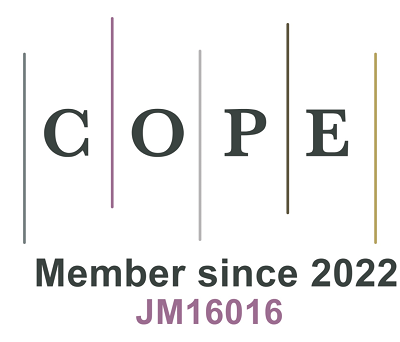REFERENCES
1. Fernandez CJ, Chacko EC, Pappachan JM. Male obesity-related secondary hypogonadism-pathophysiology, clinical implications and management. Eur Endocrinol. 2019;15:83-90.
2. Leisegang K, Henkel R, Agarwal A. Obesity and metabolic syndrome associated with systemic inflammation and the impact on the male reproductive system. Am J Reprod Immunol. 2019;82:e13178.
3. Stanford FC, Tauqeer Z, Kyle TK. Media and its influence on obesity. Curr Obes Rep. 2018;7:186-92.
4. Camacho EM, Huhtaniemi IT, O'Neill TW, et al; EMAS Group. Age-associated changes in hypothalamic-pituitary-testicular function in middle-aged and older men are modified by weight change and lifestyle factors: longitudinal results from the European Male Ageing Study. Eur J Endocrinol. 2013;168:445-55.
5. Shi Z, Araujo AB, Martin S, O'Loughlin P, Wittert GA. Longitudinal changes in testosterone over five years in community-dwelling men. J Clin Endocrinol Metab. 2013;98:3289-97.
6. Escobar-Morreale HF, Santacruz E, Luque-Ramírez M, Botella Carretero JI. Prevalence of 'obesity-associated gonadal dysfunction' in severely obese men and women and its resolution after bariatric surgery: a systematic review and meta-analysis. Hum Reprod Update. 2017;23:390-408.
7. Corona G, Goulis DG, Huhtaniemi I, et al. European Academy of Andrology (EAA) guidelines on investigation, treatment and monitoring of functional hypogonadism in males: Endorsing organization: European Society of Endocrinology. Andrology. 2020;8:970-87.
8. Calderón B, Gómez-Martín JM, Vega-Piñero B, et al. Prevalence of male secondary hypogonadism in moderate to severe obesity and its relationship with insulin resistance and excess body weight. Andrology. 2016;4:62-7.
9. Wu FC, Tajar A, Pye SR, et al; European Male Aging Study Group. Hypothalamic-pituitary-testicular axis disruptions in older men are differentially linked to age and modifiable risk factors: the European Male Aging Study. J Clin Endocrinol Metab. 2008;93:2737-45.
10. Bellastella G, Menafra D, Puliani G, Colao A, Savastano S; Obesity Programs of nutrition. How much does obesity affect the male reproductive function? Int J Obes Suppl. 2019;9:50-64.
11. Rubinow KB. Estrogens and body weight regulation in men. In: Mauvais-jarvis F, editor. Sex and gender factors affecting metabolic homeostasis, diabetes and obesity. Cham: Springer International Publishing; 2017. pp. 285-313.
12. Dhindsa S, Furlanetto R, Vora M, Ghanim H, Chaudhuri A, Dandona P. Low estradiol concentrations in men with subnormal testosterone concentrations and type 2 diabetes. Diabetes Care. 2011;34:1854-9.
13. Saboor Aftab SA, Kumar S, Barber TM. The role of obesity and type 2 diabetes mellitus in the development of male obesity-associated secondary hypogonadism. Clin Endocrinol. 2013;78:330-7.
14. Cohen PG. Aromatase, adiposity, aging and disease. The hypogonadal-metabolic-atherogenic-disease and aging connection. Med Hypotheses. 2001;56:702-8.
15. Birzniece V. Gonadal steroids and body composition, strength, and sexual function in men. N Engl J Med. 2013;369:2455.
16. Xu X, Sun M, Ye J, et al. The effect of aromatase on the reproductive function of obese males. Horm Metab Res. 2017;49:572-9.
17. Schulster M, Bernie AM, Ramasamy R. The role of estradiol in male reproductive function. Asian J Androl. 2016;18:435-40.
18. Quennell JH, Mulligan AC, Tups A, et al. Leptin indirectly regulates gonadotropin-releasing hormone neuronal function. Endocrinology. 2009;150:2805-12.
19. Marcouiller F, Jochmans-Lemoine A, Ganouna-Cohen G, et al. Metabolic responses to intermittent hypoxia are regulated by sex and estradiol in mice. Am J Physiol Endocrinol Metab. 2021;320:E316-25.
20. Carrageta DF, Oliveira PF, Alves MG, Monteiro MP. Obesity and male hypogonadism: tales of a vicious cycle. Obes Rev. 2019;20:1148-58.
21. Genchi VA, Rossi E, Lauriola C, et al. Adipose tissue dysfunction and obesity-related male hypogonadism. Int J Mol Sci. 2022;23:8194.
22. Dimopoulou C, Goulis DG, Corona G, Maggi M. The complex association between metabolic syndrome and male hypogonadism. Metabolism. 2018;86:61-8.
23. Mangiola S, Stuchbery R, McCoy P, et al. Androgen deprivation therapy promotes an obesity-like microenvironment in periprostatic fat. Endocr Connect. 2019;8:547-58.
24. Kim S, Kwon H, Park JH, et al. A low level of serum total testosterone is independently associated with nonalcoholic fatty liver disease. BMC Gastroenterol. 2012;12:69.
25. Stellato RK, Feldman HA, Hamdy O, Horton ES, McKinlay JB. Testosterone, sex hormone-binding globulin, and the development of type 2 diabetes in middle-aged men: prospective results from the Massachusetts male aging study. Diabetes Care. 2000;23:490-4.
26. Di Vincenzo A, Crescenzi M, Granzotto M, et al. Relationship between sex hormones, markers of adiposity and inflammation in male patients with severe obesity undergoing bariatric surgery. Metab Target Organ Damage. 2023;3:12.
27. Kawai T, Autieri MV, Scalia R. Adipose tissue inflammation and metabolic dysfunction in obesity. Am J Physiol Cell Physiol. 2021;320:C375-91.
28. Liu L, Shi Z, Ji X, et al. Adipokines, adiposity, and atherosclerosis. Cell Mol Life Sci. 2022;79:272.
29. Koliaki C, Liatis S, Kokkinos A. Obesity and cardiovascular disease: revisiting an old relationship. Metabolism. 2019;92:98-107.
30. Corona G, Rastrelli G, Di Pasquale G, Sforza A, Mannucci E, Maggi M. Endogenous testosterone levels and cardiovascular risk: meta-analysis of observational studies. J Sex Med. 2018;15:1260-71.
31. Dhindsa S, Prabhakar S, Sethi M, Bandyopadhyay A, Chaudhuri A, Dandona P. Frequent occurrence of hypogonadotropic hypogonadism in type 2 diabetes. J Clin Endocrinol Metab. 2004;89:5462-8.
32. Grossmann M. Low testosterone in men with type 2 diabetes: significance and treatment. J Clin Endocrinol Metab. 2011;96:2341-53.
33. Wittert G, Bracken K, Robledo KP, et al. Testosterone treatment to prevent or revert type 2 diabetes in men enrolled in a lifestyle programme (T4DM): a randomised, double-blind, placebo-controlled, 2-year, phase 3b trial. Lancet Diabetes Endocrinol. 2021;9:32-45.
34. Robledo KP, Marschner IC, Handelsman DJ, et al. Mediation analysis of the testosterone treatment effect to prevent type 2 diabetes in the testosterone for prevention of type 2 diabetes mellitus trial. Eur J Endocrinol. 2023;188:613-20.
35. Deepika F, Ballato E, Colleluori G, et al. Baseline testosterone predicts body composition and metabolic response to testosterone therapy. Front Endocrinol. 2022;13:915309.
36. Haider KS, Haider A, Saad F, et al. Remission of type 2 diabetes following long-term treatment with injectable testosterone undecanoate in patients with hypogonadism and type 2 diabetes: 11-year data from a real-world registry study. Diabetes Obes Metab. 2020;22:2055-68.
37. Yassin A, Haider A, Haider KS, et al. Testosterone therapy in men with hypogonadism prevents progression from prediabetes to type 2 diabetes: eight-year data from a registry study. Diabetes Care. 2019;42:1104-11.
38. Arrese M, Cabello-Verrugio C, Arab JP, et al. Sarcopenia in the setting of nonalcoholic fatty liver. Metab Target Organ Damage. 2022;2:2.
39. Nasr P, Jönsson C, Ekstedt M, Kechagias S. Non-metabolic causes of steatotic liver disease. Metab Target Organ Damage. 2023;3:19.
40. Alqahtani SA, Alhawiti NM. Administration of testosterone improves the prothrombotic and antifibrinolytic parameters associated with its deficiency in an orchidectiomized rat model. Platelets. 2019;30:624-30.
41. De Pergola G, De Mitrio V, Sciaraffia M, et al. Lower androgenicity is associated with higher plasma levels of prothrombotic factors irrespective of age, obesity, body fat distribution, and related metabolic parameters in men. Metabolism. 1997;46:1287-93.
42. Spiel AO, Gilbert JC, Jilma B. von Willebrand factor in cardiovascular disease: focus on acute coronary syndromes. Circulation. 2008;117:1449-59.
43. Palhinha L, Liechocki S, Hottz ED, et al. Leptin induces proadipogenic and proinflammatory signaling in adipocytes. Front Endocrinol. 2019;10:841.
44. Astapova O, Leff T. Chapter Six - Adiponectin and PPARγ: cooperative and interdependent actions of two key regulators of metabolism. Adiponectin. Elsevier; 2012. pp. 143-62.
45. Shan T, Liu W, Kuang S. Fatty acid binding protein 4 expression marks a population of adipocyte progenitors in white and brown adipose tissues. FASEB J. 2013;27:277-87.
46. Yang W, Yang C, Luo J, Wei Y, Wang W, Zhong Y. Adiponectin promotes preadipocyte differentiation via the PPARγ pathway. Mol Med Rep. 2018;17:428-35.
47. Lee JE, Schmidt H, Lai B, Ge K. Transcriptional and epigenomic regulation of adipogenesis. Mol Cell Biol. 2019;39:e00601-18.
48. Ghaben AL, Scherer PE. Adipogenesis and metabolic health. Nat Rev Mol Cell Biol. 2019;20:242-58.
49. Prentice KJ, Saksi J, Robertson LT, et al. A hormone complex of FABP4 and nucleoside kinases regulates islet function. Nature. 2021;600:720-6.
50. Trombley S, Rocha A, Schmitz M. Sex steroids stimulate leptin gene expression in Atlantic salmon parr hepatocytes in vitro. Gen Comp Endocrinol. 2015;221:156-64.
51. Dieudonne MN, Pecquery R, Boumediene A, Leneveu MC, Giudicelli Y. Androgen receptors in human preadipocytes and adipocytes: regional specificities and regulation by sex steroids. Am J Physiol. 1998;274:C1645-52.
52. De Pergola G, Xu XF, Yang SM, Giorgino R, Bjorntorp P. Up-regulation of androgen receptor binding in male rat fat pad adipose precursor cells exposed to testosterone: study in a whole cell assay system. J Steroid Biochem Mol Biol. 1990;37:553-8.
53. Xu X, De Pergola G, Björntorp P. The effects of androgens on the regulation of lipolysis in adipose precursor cells. Endocrinology. 1990;126:1229-34.









